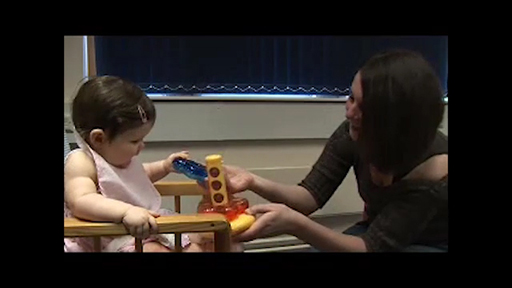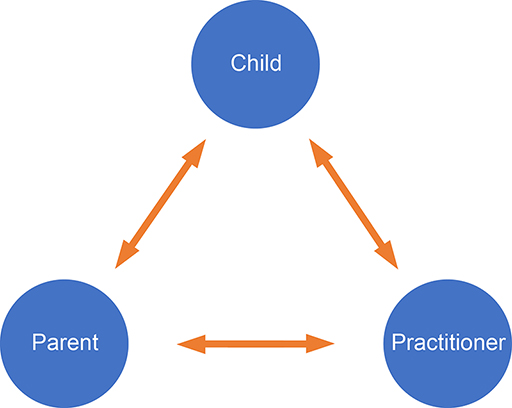4 Key person
When babies and young children begin to extend their connections outside their family and close friends – for example, when starting nursery or being cared for by a childminder – they have to deal with making a new set of connections with different groups of children and adults. These connections are sometimes called ‘secondary attachments’, building on the attachment to parents and carers that you explored in Week 4. To support this move outside the family circle and establish these positive relationships right from the start, many early childhood settings operate a ‘key person’ approach where a close relationship between a baby or toddler and one specific adult is developed. The relationship between the child, their parents and the practitioner has been described as a ‘triangle of trust’ (Wheeler, 2022).
Often there are overlaps between the relationship the baby or toddler has with their key person and the experiences they have at home with their parents or carers, but unlike at home the key person will have a number of other children of a similar age to support. And the key person themselves may not always be present when the child is in the setting or is in need of emotional support. It is possible that less reliance on a single adult within a setting may support the development of rich and more numerous interactions with children of a similar age, and the Welsh Government’s Framework for Early Childhood Play, Learning and Care (2023) and A Curriculum for Non-maintained Nursery Settings (2022) highlight that all the practitioners in a setting have a responsibility to act as ‘enabling adults’ who ‘should take the time to get to know individual children’ (2023, p. 8) and also ‘recognise our role is integral to the progress of all children’ (2022, p. 8).
Each key person will have responsibility for more than one child, so an important feature of the role is to try and be consistent across the needs of each child. To do this it is helpful to consider these questions (adapted from Johnson, 2010):
- How much time within a day or session is likely to be needed with each child in a key group?
- How many colleagues should share the relationship with the key child, and what does their contribution entail?
- How are the differing needs of each child in the group met fairly?
- As a key person are you focusing on gaining holistic knowledge of the child, or specialist knowledge in some specific areas?
- What role do you play in sharing information with parents or carers?
However settings choose to organise it, the key person role is an important part of early childhood practice and has been described as ‘professional love’. Page (2008) uses this term to try to show the importance of the closeness of the relationship between the key person and the child, while making it clear that it does not replace or diminish the quality or significance of children’s loving relationships with their parents. An important part of developing a bond with babies and toddlers is being able to ‘tune-in’ to their feelings, interests and reactions, and this process starts from the first moment you meet them.
Activity 33.1 Activity 4 How babies communicate
Watch this Open University video and then use the box below to note down the ways that you can see the baby communicating their interest and feelings.

Transcript: Video 2
Discussion
These are just a few indicators (below) and you might have noticed others too. Tuning in to all these signs and indicators and responding to them helps us to develop our relationship with the babies and toddlers.
- The facial expressions that the baby used.
- The way they were sitting or leaning forward at different times.
- What they reached out for and what they touched.
- The movements they made.
- What they were looking at and how their attention and focus moved around.

